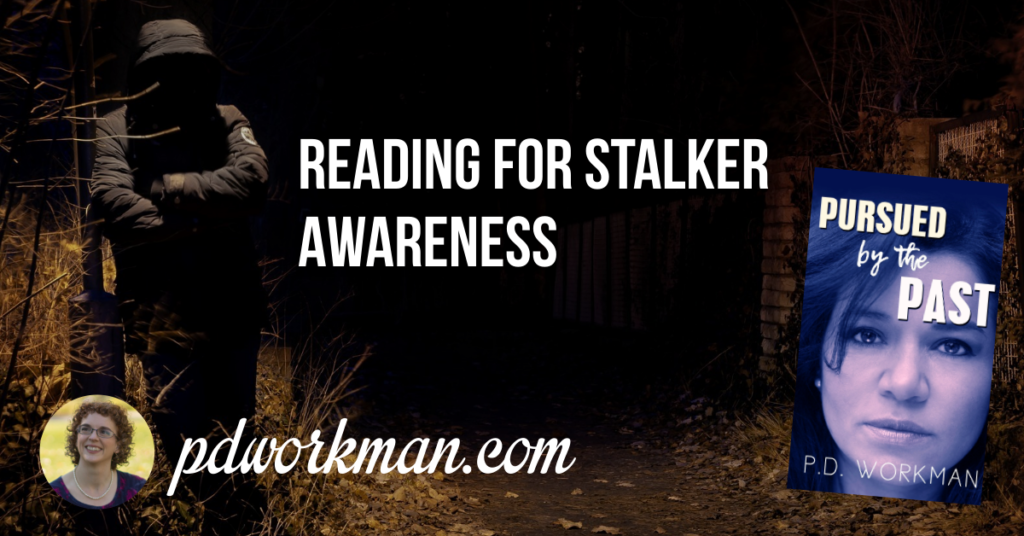
January is National Stalking Awareness Month. Despite all of the advances society has made in the area of relationships, consent, and violence against women, stalking is still a very real problem. And despite the stuff you might see on TV, where stalkers are caught in the space of an hour, many people have been stalked for years, despite multiple police reports and protective orders. Stalkers are frequently released shortly after arrest and sentences when/if they are ever convicted of stalking can be very light. Then, they are back on the street and up to their old tricks.
What is Stalking?
Stalking is a repetitive pattern of unwanted, harassing or threatening behavior committed by one person against another. Acts include: telephone harassment, being followed, receiving unwanted gifts, and other similar forms of intrusive behavior. All states and the Federal Government have passed anti-stalking legislation. Definitions of stalking found in state anti-stalking statutes vary in their language, although most define stalking as “the willful, malicious, and repeated following and harassing of another person that threatens his or her safety”
Fact Sheet on Stalking, National Violence Against Women Prevention Research Center
How Prevalent is Stalking?
According to one study, 1 in every 12 women and 1 in every 45 men is the victim of stalking. (The National Violence Against Women Survey)
That means that a lot of people, including some of those who are reading this article, have been the victim of stalking at some point in their lives. I have a little experience in this area myself, having been stalked by a man in a pick-up truck when I was out running on several occasions. Luckily, when I did call for help and report it to the police, they warned him off and it was resolved without further incident. But it did change the way that I saw other people/vehicles when I was out running, my level of vigilance, the need to have some form of personal protection, and so on. It was several years before I really felt like I was able to put that experience behind me. And it was such a mild incident compared to what some victims go through.
Which brings me to another issue.
Impact of Stalking on Victims
Stalking can have a wide range of negative effects on victims, including:
- mental health
- feelings of isolation
- disordered sleep
- hypervigilance
- drug and alcohol use
- suicide
- physical health such as weight loss, shortness of breath, and heart palpitations
- loss of job or dropping out of school
- relationship and friendship issues
- financial losses
Profile of a Stalker
Despite popular opinion and portrayals in the media, stalkers are rarely mentally ill, and if they are, treatment of the mental illness alone does not stop the stalking behaviour. What might a typical stalker look like?
- the majority are men, young to middle aged, average to above-average intelligence, and from any socio-economic background
- stalkers have different motives and show different behaviors, so it is difficult to pin them down to a single “type”, but most fall into one of two categories:
- “Love Obsession Stalkers” – love or fixate on a person that they have no personal relationship with. It may be a casual acquaintance or a stranger. They might stalk celebrities, but they might just stalk their neighbor down the street. They try to woo their target and expect the victim to return their love. When they don’t, it can turn violent.
- “Simple Obsession Stalkers” – these stalkers usually have a prior relationship, often romantic. These may be intimate partner stalkers. They are frequently emotionally immature, jealous, and insecure. They try to dominate and control their partner (or former partner.) Their self-esteem tends to be built around their partner, and when the partner leaves, the stalker believes that life is not worth living without them. Victims who have been in an abusive relationship run a 75% higher risk of being murdered than those who were in a non-abusive relationship.
Stalking in Popular Media
Unfortunately, Hollywood romanticizes stalking behaviors and portrays them as normal and even desirable. The stalker is told “no” by the love interest, and instead of accepting the victim’s answer, decides to pursue the victim, often to great extremes.
Some great articles on this phenomenon:
- Our Favorite Television Characters Are Still Stalkers
- Glorification of Stalking Behaviors in Romantic Comedies Affects Our Perception of Them
- 5 Movies that Normalize Stalking IRL
What can you do if you are being stalked?
A number of the articles that I looked at recommend avoiding all activities that would take you outside of your home, office, or car, and would result in an isolated, hermit-like existence. In a roundabout way, the put the blame on the victim for engaging in risky behaviors. It is similar to the fact that a woman wearing tight or revealing clothing is not “asking” to be raped (it is the rapist’s responsibility to abstain from violent and criminal behaviour.) In the same way, someone waiting at a bus stop, running alone, or walking through a dark parking lot is not “asking” to be stalked.
The victim of stalking should have a safety plan. A safety plan is more than just hiding at home and avoiding putting yourself at risk for someone to see you or follow you. It is preparing ahead, documenting, and informing and involving those in your community (family, friends, neighbours, coworkers, social media connections, etc.) Here are some articles that are less victim-blamey. (Yes, it’s a word, it’s in Wiktionary.)
Reading Fiction About Stalking
Okay, now you’ve been educated. Now it’s time for some entertainment (which you may actually also find educating. But the kind of education you can get while lying in a bubble bath or curled up in a sunny window or in front of a blazing fire.)
Pursued by the Past
Vanna had a good life. She had her challenges—like her mother’s high expectations of her—but all in all, she had a job she enjoyed, a fun hobby and friends. She didn’t need any complications.
But that all changed shortly after trying to break things off with Tino. The phone calls with no one on the other end. Anonymous gifts. Someone moving things around in her bedroom.
A restraining order changed nothing. If anything, it caused things to escalate. If Vanna wants her life back, she will have to take things into her own hands.
Keeps you wondering what comes next. I don’t know how this woman kept it together. Very good book and the characters were great. Looking forward to reading another book by this author.
—Gail, Goodreads Reader
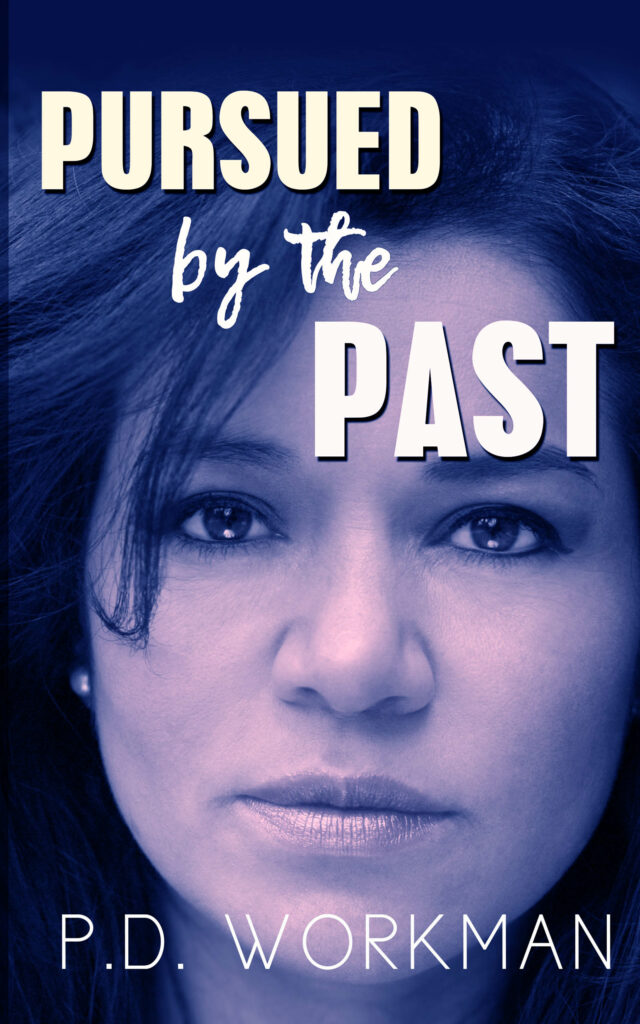
Keeps you wondering what comes next. I don’t know how this woman kept it together. Very good book and the characters were great. Looking forward to reading another book by this author.
—Gail, Goodreads Reader
Killer Score
Obsession is a dangerous thing, especially if you’re the target…
Detective Evan Gallagher has exchanged his job as an FBI agent for a position within Ireland’s police force. An Garda Síochána rarely deals with serious crime, and Evan thinks Dublin would be a quiet place to start over—but he’s proven wrong.
Psychologist Chelsea Campbell never thought that volunteering as profiler for the Garda would change her life so drastically—until Detective Gallagher calls her to a murder scene in the middle of the night.
Is this a one-time impulse, or is the killer’s agenda only starting? As hard as Chelsea and Evan struggle to solve the case, neither of them expects a second dead body so soon. Working against the clock, they have to win this cat-and-mouse game before the killer claims the next intended victim—which happens to be one of them.
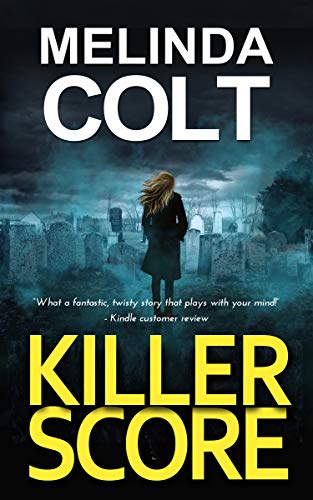
Stalker
Derek Flint is a loner. He lives with his mother and spends his
evenings watching his clients on the CCTV cameras he has installed inside their homes. He likes their companionship – even if it’s through a screen.
When a series of crimes hits Derek’s neighbourhood, DC Beth Mayes begins to suspect he’s involved. How does he know so much about the victims’ lives? Why won’t he let anyone into his office? And what is his mother hiding in that strange, lonely house?
As the crimes become more violent, Beth must race against the clock to find out who is behind the attacks. Will she uncover the truth in time? And is Derek more dangerous than even she has guessed?
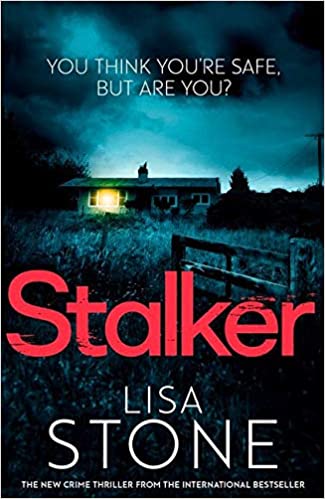
Stalker on the FEns
DI Nikki Galena’s close friend Helen Brook is involved in a serious accident where she is trapped in a collapsed cellar. After her hard-won recovery, Helen is still getting flashbacks to a man she says was down there with her and who confessed to a murder. But no trace of this man can be found.
Then Helen tells Nikki that someone is watching her. But is all this in her friend’s imagination and part of her post-traumatic stress?
And why is Stephen Cox back in town? He’s the villain who tore Nikki’s life apart and he seems to have returned to wreak more chaos. Before long the whole town is on the verge of hysteria and her friend’s fear will lead Nikki and Joseph on a very dangerous trail.

Stalked
When Detective Inspector Jemima Huxley gets a call to say Violet Watkins has been reported missing, she is immediately catapulted into the past.
Jemima first met Violet six years earlier, when she reported her neighbour Byron Toombes for stalking her.
Jemima did her best to get Byron locked up, but her failure to bring him to justice has always haunted her.
Now, with Violet missing, Jemima fears the worst…
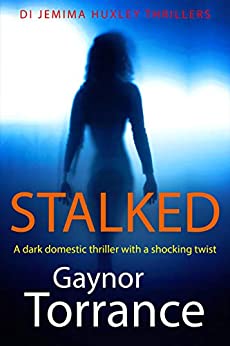
Stalker
The Swedish National Crime Unit receives a video of a young woman in her home, clearly unaware that she’s being watched. Soon after the tape is received, the woman’s body is found horrifically mutilated. With the arrival of the next, similar video, the police understand that the killer is toying with them, warning of a new victim, knowing there’s nothing they can do.
Detective Margot Silverman is put in charge of the investigation, and soon asks Detective Joona Linna for help. Linna, in turn, recruits Erik Maria Bark, the hypnotist and expert in trauma, with whom Linna’s worked before. Bark is leery of forcing people to give up their secrets. But this time, Bark is the one hiding things.
Years before, he had put a man away for an eerily similar crime, and now he’s beginning to think that an innocent man may be behind bars–and a serial killer still on the loose. . .
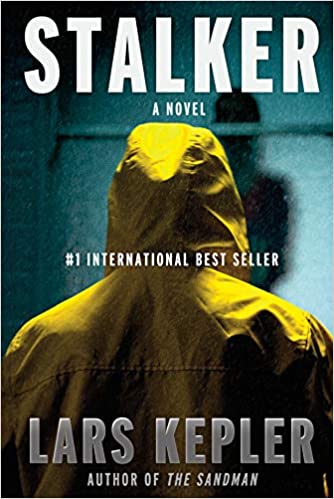



Thank you so much for featuring Killer Score in your article! I find it extremely useful and well-written.